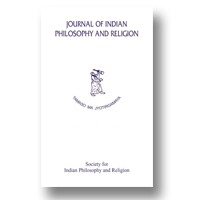|
5.
|
Journal of Indian Philosophy and Religion:
Volume >
9
Leon Schlamm
Ken Wilber's Spectrum Model:
Identifying Alternative Soteriological Perspectives
abstract |
view |
rights & permissions
| cited by
In this paper I identify two problematic strands of Wilber's transpersonal theory. Firstly, I question Wilber's claim that his spectrum model is supported by the materials of all the world's major mystical traditions, arguing that his integral, hierarchical perspective privileges some traditions, while distorting others. Drawing heavily upon Andrew Rawlins on's recent, taxonomic study of mystical traditions, which identifies four authentic routes to spiritual emancipation (Cool Structured, Cool Unstructured, Hot Structured and Hot Unstructured), I argue that while Wilber's model, itself Cool (the source of spiritual liberation hes within oneself) and Structured (developmental, hierarchical), provides a valuable cartography of transpersonal structures and states of consciousness, h cannot adequately handle the materials of the alternative, soteriological paths of Hot traditions (emphasising the numinous, and as other than oneself) and Unstructured traditions (affirming that there can be no gradual, or progressive, spiritual development at ah). Secondly, and more cursorily, in the light of this discussion, I argue that it is Wilber's Cool Structured perspective that informs his judgement that Jung is an elevationist. I demonstrate that Jung's psychic model of the conjunction of opposhes is a Hot Structured one, which provides an alternative, soteriological path for people whose spiritual needs are very different from those addressed by Wilber.
|
|





